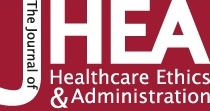Back Issue: Vol.7 No.1 (Winter 2021)
ISSN 2474-2309
Research Ethics
- Evangel Sarwar, Ph.D., MPH, HEC-C
Address correspondence to: Evangel Sarwar. MPH, Ph.D.,HEC-C. Department of Health Science & Human Ecology, California State University, San Bernardino. Email: evangel.sarwar@gmail.com
Pages: 1-10
Counterfeit drugs are a global problem and a public health hazard. Nearly 10 percent of all medicines sold worldwide are fake, leading to an estimated 100,000 deaths each year, equating to an additional economic burden of close to $200 billion annually. Counterfeit medicines also thwart public health efforts to control infectious diseases like Covid-19 and Tuberculosis and lead to the worsening of other public health crises such as anti-microbial resistance (AMR). According to the CDC, more than 2.8 million antibiotic-resistant infections in the U.S each year, with more than 35,000 people dying, have been reported. Globalization and the internet’s expansion have led to the rapid spreading of poor-quality medicines due to the high demand for cheap goods and lack of access – before adequate detection and intervention are possible. Moreover, selling counterfeit medicine is more profitable with lesser penalties, even in the U.S. As a clandestine market, there is no precise magnitude of how the counterfeit-medicine market flows. The WHO is alarmed by the lack of available data to demonstrate the extent and impact of fake/substandard medicines. Controlling counterfeit drugs’ availability will not be easy; however, it has become necessary to protect public and global health. Through the lens of a case in Bangladesh that demonstrates how easy it is to sell and get away with selling fake medicines in developing countries – this paper discusses how counterfeit medicines negatively contribute significantly to human lives and sufferings in developing and developed countries. No single policy will be effective based on the different issues faced on multiple fronts due to fake/substandard medicines. However, a broad-based concerted effort across the various stakeholders to combat this counterfeit drug problem and secure the global supply chain is urgently needed.
- Peter Clark, Jennifer Donohue, Daniel DiSandro, David Grana, Andrew Myers, Michael Fontana, Kevin Cooney
Peter A. Clark, S.J., Ph.D. Director-Institute of Clinical Bioethics Saint Joseph’s University. 5600 City Avenue Philadelphia, Pennsylvania 19131. Email: pclark@sju.edu
Pages: 11-159
This paper explains the importance of education in the dying process and outlines a full curriculum to create a society more prepared for difficult end-of-life situations. This course is structured to be taught as a high school elective course in which the principles and approaches to death and dying are discussed in depth. For a high school student, death can be approached from diverse perspectives. Within these perspectives, there are several vital topics to understand in order to ensure a student’s proper education on death. The complexity of death is represented by the titles of the nine chapters of the course. Chapter One, titled “Definition of Death, Consciousness, and Persistent Vegetative State,” highlights the development of death throughout history, the general consensus about death today, and the morality of different levels of treatment for dying patients. Chapter Two, “End Stage Medical Conditions,” outlines the most common end-of-life health conditions along with their symptoms and possible treatments. In Chapter Three, titled “Bad News and Communication,” the course introduces patient-physician communication, the current shortcomings of medical education in this vital area, and the possible protocols for effectively conveying both truth and support to a patient. Chapter Four, labelled “Do Not Resuscitate Orders, Living Wills/Advance Directives, and Durable Powers of Attorney for Health Care,” presents the appropriate options available to prepare for a patient’s inability to make informed decisions autonomously. Chapter Five, “Ordinary vs. Extraordinary Means: The Issue of Tube Feedings,” discusses the distinction between different types of end-of-life treatment and when certain treatments can be morally excused. Chapter Six, titled “Palliative Care and Hospice: A Paradigm for End-of-Life Care,” gives effective options for terminally ill patients that ensure care is never stopped and a patient’s dignity is never lost. Chapter Seven, “Pain Management,” highlights the difficulties and recommendations for establishing proper pain management. Chapter Eight, entitled “Medical Futility,” presents the debate surrounding patient autonomy with physician’s beneficence and nonmaleficence, forgoing and requesting treatments, and the values associated with this issue. Finally Chapter Nine, titled “Spirituality and End of Life Care,” emphasizes the inevitable linkage between healthcare, death, and spirituality and the benefits of proper support for a patient. This paper also highlights the ethical implications surrounding the death and dying process. The importance of this subject lies within the death-denying reality that society is today in which death is avoided and human dignity is increasingly sacrificed as a result. Discussions and education among society’s youngest adults can improve general knowledge about the dying process and lead to overall better preparation for handling this inevitable stage of humanity.
